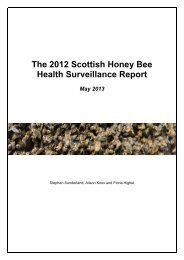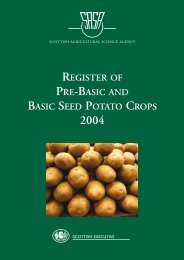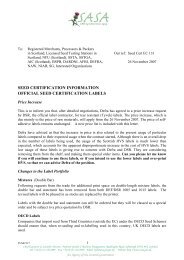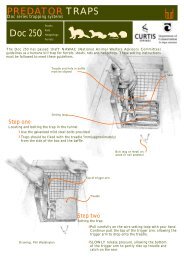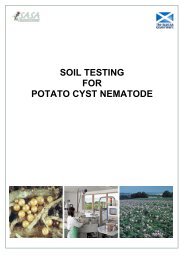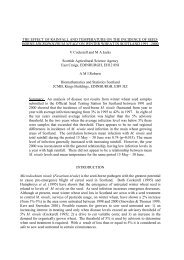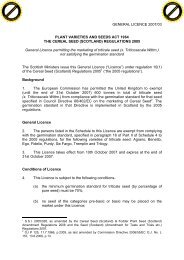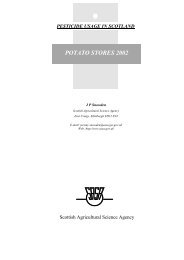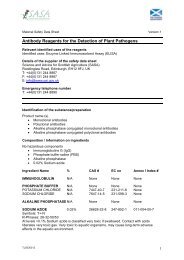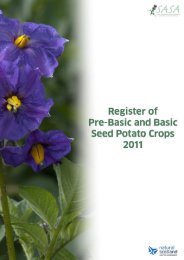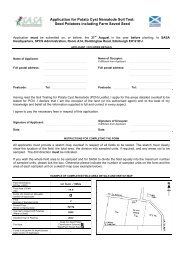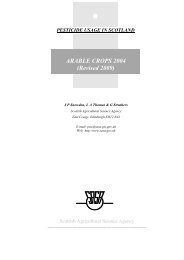SCOTTISH SEED POTATO CLASSIFICATION SCHEME - SASA
SCOTTISH SEED POTATO CLASSIFICATION SCHEME - SASA
SCOTTISH SEED POTATO CLASSIFICATION SCHEME - SASA
Create successful ePaper yourself
Turn your PDF publications into a flip-book with our unique Google optimized e-Paper software.
APPENDIX 1MINIMUM STANDARDS AT THE POINT OF INSPECTIONPotatoes being sold as seed should be prepared to the highest possible standard so that thetolerances for pests, disease, damage and defects set out in Appendices 2-5 are notexceeded on inspection of any consignment within 14 days of delivery to a purchaser. Incase of export consignments, this period may be longer.To ensure that consignments of seed potatoes meet the statutory tolerances for someprogressive diseases e.g. rot diseases and skin spot, a higher standard may be enforced bythe inspector at inspection.STANDARDS WHICH MUST BE APPLIED ARE:-Quarantine Diseases (Group I)"Nil" tolerances apply as shown.Rot Diseases (Group II)These include Tuber Blight, Bacterial Soft Rot, Pit Rot, Watery Wound Rot, Pink Rot, DryRot, Gangrene, and Frost Damaged Tubers.The tolerances shown apply.A nil tolerance for Dickeya spp. now applies.Surface Diseases (Group III)These are Black Scurf, Common Scab, Skin Spot and Powdery ScabTubers will be deemed as diseased if the surface area affected is greater than thepercentage allowable area of the surface area shown in the relevant Appendix or if only oneeye at the rose end is wholly unaffected by the disease.Where Powdery Scab takes its cankerous form all infected tubers will be counted.Skin spot: Because of the progressive nature of this disease and its effect on eye viability,voluntary re-grading or holding may be required in order to provide assurance as to thequality of the lot presented for inspection.The tolerances will apply as shown.External Blemishes etc. (Group IV)External blemishes will include: tubers which have been damaged mechanically; seriouslyaffected by wireworms, slugs, vermin or growth cracks; tubers which have becomedehydrated (e.g. because of silver scurf or black dot); tubers affected by potato mop top ortobacco rattle virus; tubers with significant sprouting and tubers exhibiting signs ofdehydration.The tolerance will apply as shown.Dirt or Extraneous Matter (Group V)



